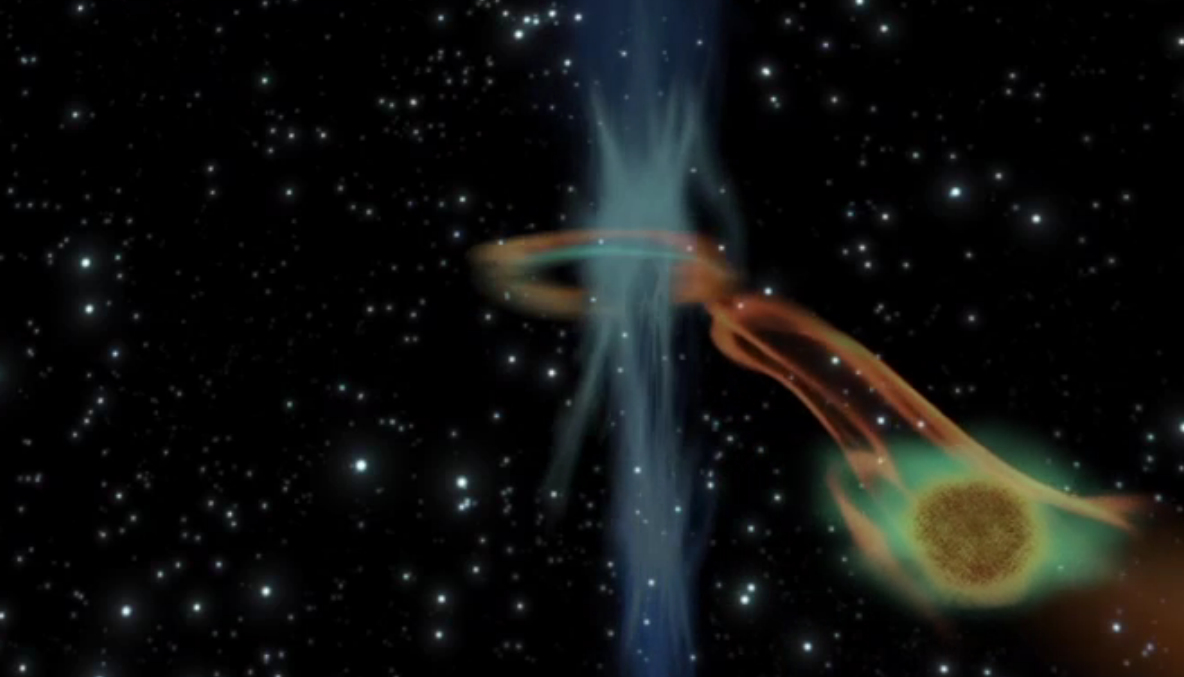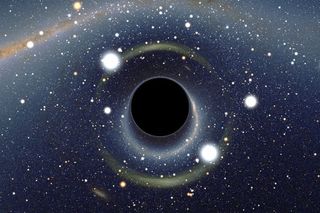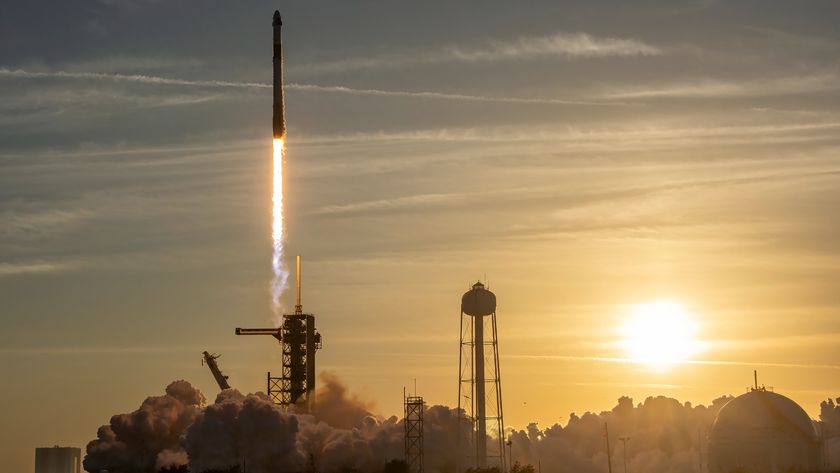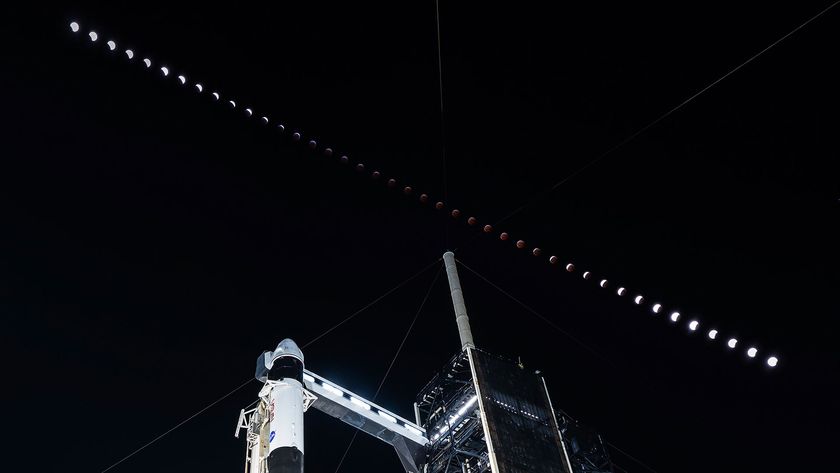
In a cosmic first, astronomers have discovered a black hole chowing down on what may be a giant rogue planet.
The supermassive black hole didn't finish off its meal, which scientists say was either a huge Jupiter-like planet wandering freely through space or a brown dwarf, a strange object that's larger than a planet yet still too small to trigger the internal fusion reactions required to become a full-fledged star.
“This is the first time where we have seen the disruption of a substellar object by a black hole," study co-author Roland Walter, of the Observatory of Geneva in Switzerland, said in a statement. "We estimate that only its external layers were eaten by the black hole, amounting to about 10 percent of the object’s total mass, and that a denser core has been left orbiting the black hole."
Researchers made the discovery using the European Space Agency's Integral space observatory, which noticed an X-ray flare coming from the center of a galaxy 47 million light-years away called NGC 4845. [Black Hole Snacks on Super Jupiter (Video)]
Follow-up observations by several other instruments — including ESA's XMM-Newton and NASA's Swift space telescopes and Japan's MAXI X-ray monitor on the International Space Station — allowed the team to trace the outburst's maximum to January 2011, when NGC 4845 brightened by a factor of 1,000 before dimming again over the next year or so.
"The observation was completely unexpected, from a galaxy that has been quiet for at least 20–30 years," lead author Marek Nikolajuk, of the University of Bialystok in Poland, said in a statement.
By studying the flare's properties, the team determined that the emission likely resulted when NGC 4845's central black hole — which is as massive as 300,000 suns — fed on an object with a mass between 14 and 30 times that of Jupiter.
Get the Space.com Newsletter
Breaking space news, the latest updates on rocket launches, skywatching events and more!
That mass range corresponds to a brown dwarf, also known as a failed star. But it's also possible that the unfortunate object is quite a bit smaller, with a mass just a few times that of Jupiter, researchers said. If that's the case, then the galaxy's black hole was probably ripping apart a free-floating gas giant planet.

Such "rogue planets," which have been ejected from their native solar systems by gravitational interactions, are thought to be incredibly common throughout the universe. One recent study, for example, estimated that rogues outnumber "normal" planets with obvious parent stars by at least 50 percent in our own Milky Way galaxy.
The Milky Way's enormous central black hole is set to have a meal of its own soon. A gas cloud as massive as several Earths is spiraling toward the black hole and should be gobbled up later this year, astronomers say.
Observing more such events should help researchers better understand how black holes feed.
"Estimates are that events like these may be detectable every few years in galaxies around us, and if we spot them, Integral, along with other high-energy space observatories, will be able to watch them play out just as it did with NGC 4845," said Christoph Winkler, ESA's Integral project scientist.
The new study was published this month in the journal Astronomy & Astrophysics.
Follow Mike Wall on Twitter @michaeldwall. Follow us @Spacedotcom, Facebook or Google+. Originally published on SPACE.com.
Join our Space Forums to keep talking space on the latest missions, night sky and more! And if you have a news tip, correction or comment, let us know at: community@space.com.

Michael Wall is a Senior Space Writer with Space.com and joined the team in 2010. He primarily covers exoplanets, spaceflight and military space, but has been known to dabble in the space art beat. His book about the search for alien life, "Out There," was published on Nov. 13, 2018. Before becoming a science writer, Michael worked as a herpetologist and wildlife biologist. He has a Ph.D. in evolutionary biology from the University of Sydney, Australia, a bachelor's degree from the University of Arizona, and a graduate certificate in science writing from the University of California, Santa Cruz. To find out what his latest project is, you can follow Michael on Twitter.











